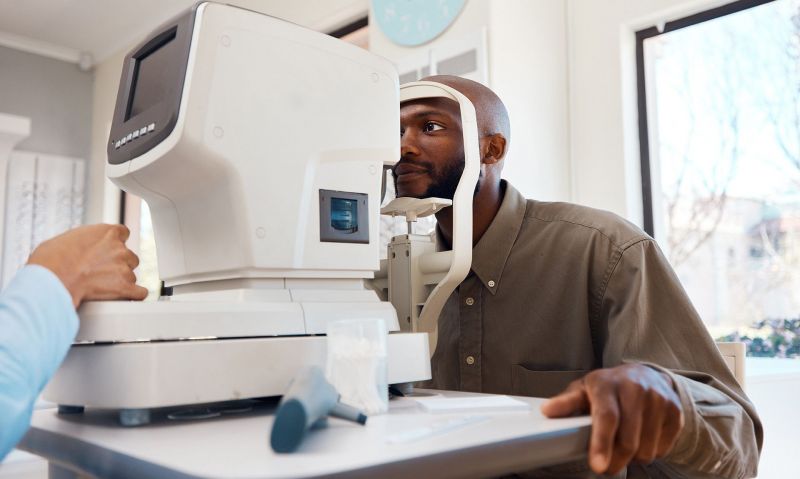
Number of patients expected surge to more than 6.3 million by 2050.
LEARN HOW YOUR PLANNED GIFT CAN HELP THE AMERICAN LEGION
My sibling was recently diagnosed with glaucoma and has suffered some vision loss without any previous warning signs. Could I be at risk too?
Having an immediate family member with glaucoma significantly increases your risk of developing it, but there are other risk factors you also need to be aware of.
What is glaucoma? Glaucoma is a group of eye diseases that damage the optic nerve and cause vision loss and blindness if not treated. This happens when the fluids in the eye do not drain properly, causing increased pressure. Unfortunately, because glaucoma has no early warning signs or pain, many do not realize they have it until their vision begins to deteriorate.
There are two main types of glaucoma: open-angle and angle-closure. The most common is open-angle glaucoma. This disease develops very slowly when the eye's drainage canals become clogged over time, leading to blind spots in peripheral or side vision. By the time an individual notices it, permanent damage is already done.
Are you at risk? It is estimated that more than 3 million Americans have glaucoma today, but that number is expected to surge to more than 6.3 million by 2050. If you answer "yes" to any of the following questions, you may have an increased risk of developing glaucoma.
1. Are you African American, Hispanic or Asian American?
2. Are you over 60?
3. Do you have an immediate family member with glaucoma?
4. Do you have diabetes, heart disease, high blood pressure, migraines, or extreme nearsightedness or farsightedness?
5. Have you had an eye injury?
6. Have you used corticosteroids (such as eye drops, pills, inhalers and creams) for long periods of time?
Next steps. Early detection is the key to guarding against glaucoma. The American Optometric Association recommends that adults 18 to 64 receive annual eye exams. If you are 40 or older and have any of the previously mentioned risk factors, you should get a comprehensive eye examination at least every 18 to 24 months. But if you notice some loss of peripheral vision, you should consult with your eye doctor immediately.
If you are a Medicare beneficiary, annual glaucoma screenings are covered for those at high risk. If your insurance does not cover screenings, search online for local no-cost glaucoma exams.
While there is currently no cure for glaucoma, most cases can be treated with prescription eye drops, which reduce eye pressure and can prevent further vision loss. However, vision lost from glaucoma cannot be restored. If eye drops do not work, your doctor may recommend oral medication, laser treatments, incisional surgery or a combination of these methods. For more information on glaucoma, visit the National Eye Institute at NEI.nih.gov.
“Savvy Living” is written by Jim Miller, a regular contributor to NBC’s “Today Show.” The column, and others like it, is available to read via The American Legion’s Planned Giving program, a way of establishing your legacy of support for the organization while providing for your current financial needs. Learn more about the process, and the variety of charitable programs you can benefit, at legion.org/plannedgiving. Clicking on “Learn more” will bring up an “E-newsletter” button, where you can sign up for regular information from Planned Giving.
- Planned Giving

